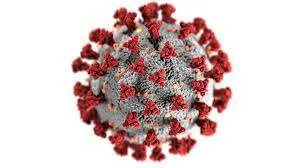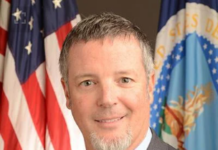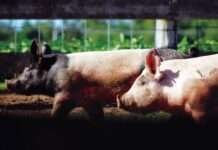USDA Deploys 127 Disaster, Public Health Specialists to Assist with Federal Response
WASHINGTON, Feb. 10, 2021 — In January 2021, President Biden released the National Strategy for the COVID-19 Response and Pandemic Preparedness (PDF, 24 MB). The plan is driven by science, data, and public health to improve the effectiveness of our nation’s fight against COVID-19 and to restore trust, accountability and a sense of common purpose in our response to the pandemic.
The National Strategy provides a roadmap to guide America out of the worst public health crisis in a century. It is organized around seven goals:
1. Restore trust with the American people.
2. Mount a safe, effective, and comprehensive vaccination campaign.
3. Mitigate spread through expanding masking, testing, data, treatments, health care workforce, and clear public health standards.
4. Immediately expand emergency relief and exercise the Defense Production Act.
5. Safely reopen schools, businesses, and travel while protecting workers.
6. Protect those most at risk and advance equity, including across racial, ethnic and rural/urban lines.
7. Restore U.S. leadership globally and build better preparedness for future threats.
The plan calls on all parts of the federal government to contribute its resources—facilities, personnel, and expertise—to contain the pandemic. The U.S. Department of Agriculture (USDA) is responding to the President’s call to action. In addition to personnel, USDA is offering its facilities, cold chain infrastructure, public health experts, disaster response specialists, and footprint in rural areas and Tribal communities across the country. Here are the some of the ways USDA is working alongside our federal partners to contain the pandemic and get our economy back on track.
USDA Programmatic Announcements
• Feb. 1: Biden Administration Halts Residential Evictions in USDA Multifamily Housing Communities in Accordance with CDC Guidance: USDA extended the eviction and foreclosure moratorium to affected multifamily housing residents through March 31, 2021, providing relief to the tens-of-thousands of Americans who rely on USDA-supported multifamily housing communities.
• Jan. 29: USDA COVID Workplace Safety Memo from Interim Deputy Assistant Secretary for Administration Dr. Gregory Parham (PDF, 304 KB)
• Jan. 27: USDA Temporarily Suspends Debt Collections, Foreclosures and Other Activities on Farm Loans for Several Thousand Distressed Borrowers Due to Coronavirus: USDA temporarily suspended past-due debt collections, foreclosures, non-judicial foreclosures, debt offsets or wage garnishments, and referring foreclosures to the Department of Justice and U.S. Attorney’s Office.
• Jan. 22: Biden Administration Expands P-EBT to Benefit Millions of Low-Income and Food Insecure Children During Pandemic: USDA is increasing the Pandemic-EBT benefit by approximately 15%, providing more money for low-income families and millions of children missing meals due to school closures.
USDA Personnel Deployments
127 Personnel Deployments to Date
• Feb. 10: The USDA Forest Service has deployed 64 Incident Management Team personnel and they are currently assigned to the National COVID Vaccine Campaign staffing vaccination centers, providing logistical support, planning at regional/state levels with FEMA and states, and more.
• Feb. 9: The USDA Animal and Plant Health Inspection Service (APHIS) has deployed 63 employees, including 53 employees to Nevada and Oklahoma to administer vaccinations at a variety of rapid points of distribution including mobile teams and pop-up clinics; 4 employees to Washington State to assist in planning vaccination efforts; and 6 employees to support FEMA.
For more information about USDA’s efforts and resources to contain the COVID-19 pandemic, please visit www.usda.gov/coronavirus.





